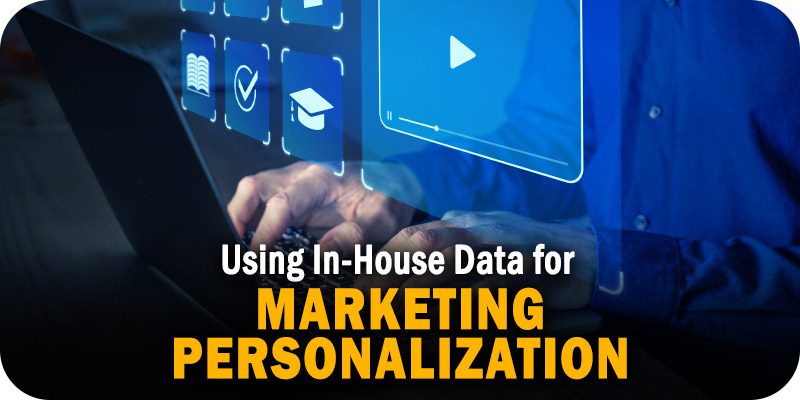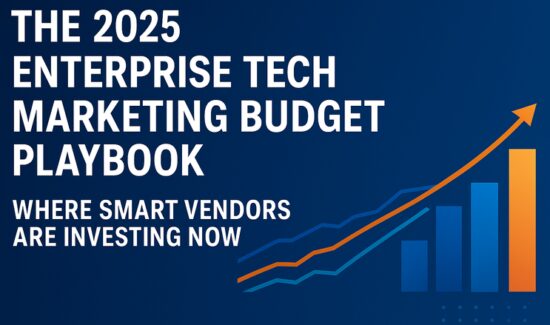Using In-House Data to Deliver Better Marketing Personalization


As part of Solutions Review’s Contributed Content Series—a collection of articles written by industry thought leaders in maturing software categories—Matt Walker, the CTO and co-founder of Simon Data, explains how in-house data can help companies provide better marketing personalization.
As regulations around customer privacy continue to evolve, marketers realize the value and capabilities of their in-house data sources. While privacy rules may change, we know that owning customers’ data is essential for success. The continuing government and consumer focus on privacy and data collection have created a tough challenge for marketers who need access to their spending data and buying preferences to personalize offers and attract new customers.
Facebook and Google have been tremendously influential in reaching customers, but privacy and cookie changes make lookalike audiences much less effective, especially as advertising costs increase. With this, there’s an opportunity for marketers to do more with their owned channels, including SMS and email, and get many of the same retargeting benefits while reducing customer churn.
One approach to capitalize on the in-house data you already have is to implement a new Customer Data Platform (CDP) or to look at ways to expand a current Data Management Platform (DMP). These tools can make it easier to achieve benefits similar to what third-party data offers while providing better personalization. Here’s how companies can decide on the best approach and deploy an effective data solution to reach customers in a changing environment.
Bring Data Science and Marketing Teams Together
Commercial Data Science programs are often focused on generating probabilistic predictions about broad cohorts and lookalike audiences. Data science is very good at finding significant trends and influencing buying decisions that guide marketing programs. At the same time, marketing discipline is about finding the customers most likely to make a purchase. AI and data science are focused on looking at audiences, whereas online marketing is more focused on reaching specific people. To bring these fields together, it’s essential to leverage the strengths of each.
Data science is excellent at finding likely possibilities, generalized solutions, and ‘similar’ target audiences. If that’s all you need for your campaigns, a Data Management Platform (DMP) can be sufficient to reach new audiences. Results from a DMP may not be as specific as a CDP. Still, it’s important to remember that the act of marketing is a “deterministic reality,” which means you’re (hopefully) targeting specific customers and prospects. Data science and analytics exist in a probabilistic world, but this isn’t acceptable for personalized marketing. It would help if you had a framework that could adapt probabilistic decisions and convert them into deterministic, highly customized marketing messages.
The potential marketing cost of getting a person’s name wrong, sending a follow-up long after a customer has looked at your website, or even just sending recommendations for products that someone hasn’t looked at in three years, can all cause a much bigger reputation hit than just showing a mistargeted ad to that same customer. Accurate personalization is essential to make a one-to-one marketing connection when someone opens your message.
To prevent issues with poor personalization, companies need to create a technical framework that mimics how data scientists draw boundaries around what appears to work and then have the marketing team focus on this pool to execute particular messages and campaigns or adjust channel strategy. A CDP is especially useful for evaluating and comparing different marketing channels. Suppose data science can identify the big groups. In that case, marketing analytics can reach specific customers, allowing companies to take action at the right time and place for each marketing channel.
Prioritize First and Zero-Party Data to Supplement Third-Party Data
Apple’s App Tracking Transparency made it much harder to collect and combine data across multiple sources and apps when only users allowed cross-app tracking initially. Third-party data will become more expensive and less valuable over time. Third-party data is about broad strokes of demographic and behavioral data that are most useful for data science and can, unfortunately, include anonymous duplicates of known customers from other data sources you already have.
To combat this, companies need to focus on first and zero-party data to achieve individual-level insights from direct customer input. First-party data is the information a company indirectly captures from the web or mobile app behavior, purchase history, loyalty, or even social media posts. Zero-party data like custom sizes or style preferences can lead to better personalization and more accurate targeting. This data can improve segmentation and create a strong foundation for your customer data models. It can even identify channels such as email or SMS that may cost much less than Facebook or Google campaigns but deliver a more personalized experience.
Best of Breed vs. All-in-One: APIs Make a Difference
While an all-in-one solution will cover most needs, many companies are accustomed to using different stand-alone point-solution products for marketing efforts like triggered emails or A/B tests. Many all-in-one packages can consist of acquired products bolted onto the main product with varying levels of success and functionality. Interoperability may not be as robust as expected, and many companies may be paying for components they never use.
On the other hand, using a variety of “best of breed” products can open up new opportunities while still using your favorite applications. But orchestrating all the SaaS apps and data flow can create more work integrating data, creating reports, or even just running experiments.
Your best bet is to look at the level of API support that an orchestration CDP platform offers. A solid CDP platform can cover all the basics and provide a wide range of API integrations that give marketers flexibility down the road if they need to change their SMS provider to a more reliable or lower-cost option. If your CDP supports multiple integrations in the same marketing channel, it can make it much easier to swap vendors if needed.
Remember, data flow isn’t just one-way; you need to pull data out of the CDP and manage two-way transfers so you can enrich user profiles using the data from your application and the actions the CDP is taking. Having everything feed into one platform will simplify experimentation and data management.
Develop “Real-Time” Content
Real-time content is invaluable for creating personalized marketing messages that directly appeal to consumers, but this often requires coordination between multiple data sources and external APIs. Suppose an airline sends an email suggesting a trip with a discount for a specific customer. In that case, the marketing team will need to combine a customer’s flight history and favorite destinations with data recommending the best time to send the email and a last-second call to collect pricing data that changes frequently.
Product recommendations are another example of combining good zero and first-party data and reusing the in-house data assets that an organization already has. Product recommendations start with what one customer has purchased. Still, this data needs to be combined with purchases from similar collections of customers to uncover the best product options and to add those recommendations to marketing messages. By using the same assets and analysis engines for both email and the company website, a consumer will see the same recommendations on the website that they received in the email.
The world of marketing technology will continue to grow and evolve to balance privacy concerns with the need to reach the right customers. But we have a path to the future by building on the in-house data you already collect and using it better with a shared view of goals between data science and marketing. Creating a solid infrastructure, no matter what approach you take, will help you explore, integrate and improve your marketing efforts. Organizations that leverage their data to personalize their marketing have the best path to success no matter how the market changes.





















